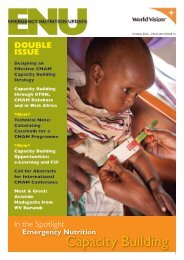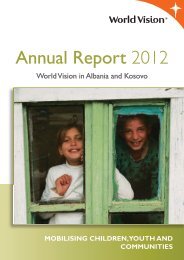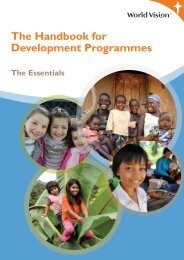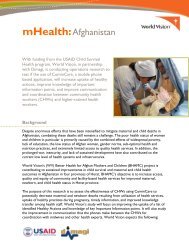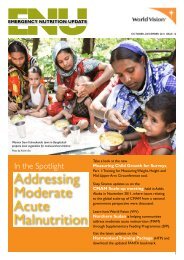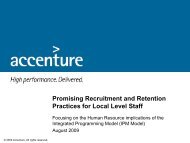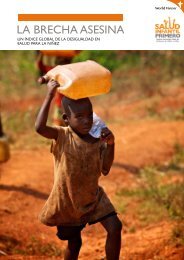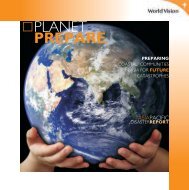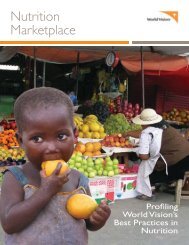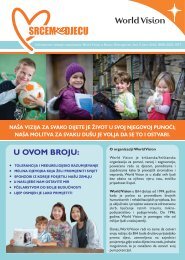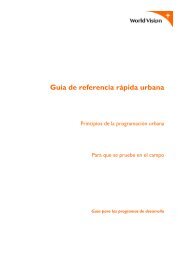Download Publication - World Vision International
Download Publication - World Vision International
Download Publication - World Vision International
Create successful ePaper yourself
Turn your PDF publications into a flip-book with our unique Google optimized e-Paper software.
Water and Sanitation<br />
Hygiene (WASH)<br />
Beneficiaries<br />
37,210 men, women and children<br />
WASH is a context-specific sector in WVIN. In the areas (ADPs)<br />
that WVIN works in, through Community-Led Total Sanitation<br />
(CLTS), it seeks to address water and sanitation issues, and the<br />
hygiene of vulnerable communities. WASH projects work to<br />
provide safe drinking water to communities, promote toilets for<br />
improved sanitation, and raise awareness among communities<br />
regarding good personal hygiene practices.<br />
In FY 2012, WVIN implemented WASH activities in ten of its<br />
ADPs in Kathmandu, Lalitpur, Bhaktapur, Morang, Sunsari, Kaski,<br />
Rupandehi, Jumla, Lamjung and Kailali districts.<br />
In FY 2012, ADP WASH projects improved the health of village<br />
people by providing safe drinking water and sanitation. The project<br />
helped with toilet construction in communities, schools, and<br />
health posts. In coordination with community, implementing and<br />
government partners, VDCs in different working districts were<br />
declared Open Defecation-Free areas. Sanitation campaigns and<br />
rallies were organised to raise awareness. Community garbage<br />
pits were built. Training in separating bio-degradable and non<br />
bio-degradable waste were given to village people and students.<br />
Workshops on the importance of environmental sanitation and<br />
personal hygiene were held for SMC, PTSA, child club members,<br />
teachers, and students. The ability of peer groups to share their<br />
knowledge on personal hygiene and sanitation was strengthened.<br />
In FY 2012, water systems were renovated and new water systems/<br />
water collection tanks/tube-wells were installed to provide easy<br />
access to safe drinking water. Water Users Committee (WUC)<br />
members were trained on roles and responsibilities, registration<br />
processes, institutional development, and conflict management.<br />
They have also started to collect operation and maintenance funds<br />
to ensure the long-term future of their water supply systems.<br />
Village people were taught the reuse of waste water. Training was<br />
given to female health volunteers to strengthen their knowledge of<br />
water-borne diseases and water purification methods. The capacity<br />
of Environment Management Groups and VDC Water, Sanitation<br />
and Hygiene Coordination Committee, were strengthened. Various<br />
water points were checked as to water quality, suction tube wells<br />
were upgraded. To create awareness in schools, activities such<br />
as art, poetry, and debating competitions on the topic of water,<br />
sanitation, and hygiene were held.<br />
17



